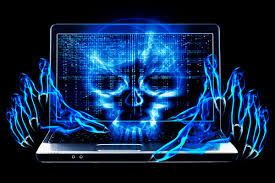Our digital security experts at Evidence Solutions have written about laptop security several times. In our last article, we covered items 1 through 5.

Computer Breach Expert: Keep Your Laptop Safe!
Mobile technology, especially laptops, push along productivity. Whether you’re in the office, at home, in school, in a hotel or at a coffee shop, laptops are everywhere. The mobile computer allows you to stay in touch and do productive work regardless of where you are in the world.
However, along with portable productivity comes vulnerabilities. Laptops get lost or stolen frequently. Gartner, Inc., a technology research firm based in Stamford Connecticut, recently said an estimated 68 laptops go missing every hour, one every 53 seconds.
Evidence Solutions, Inc. has seen firsthand, through our clients, the time, pain and security breaches accompanied with loss of a laptop. We have compiled a list of 10 steps to help reduce the pain of the lost or stolen laptop. Below are steps 6 through 10.
6. Make A Note Of Registration Codes For Hard-To-Find Software
Software registration codes, especially for older software, are difficult and sometimes impossible to replace. Most newer software programs are activated over the Internet. Keep track of your installation and activation codes where you are able to retrieve a copy. A simple way to keep this information is in a document that synchronizes to the cloud and also gets backed-up to a local backup device.
A copy of the installation software is also important. Save a copy somewhere safe so you can reinstall the software should the need arise.
7. Encrypt Portable devices
Encrypting your laptop's hard disk drive is key. However, remember to encrypt all portable devices as well. These include such things as an USB hard disk drives and thumb drives. Devices get lost and devices are stolen from offices and hotel rooms more often than most people think. Encrypting all of your portable storage devices will keep the electronically stored information ( ESI ) safe. It may also prevent competitors and hackers from obtaining the information that has been backed up or stored on these portable devices.
Most of the external device manufacturers are bundling encryption software and backup software with their products. In addition, you can use the operating system’s encryption options to encrypt these portable devices as well.
8. Treat Your Laptop Like Cash
Keep your laptop physically secure. Act like it is a pile of $100 bills. You wouldn't just leave several thousand dollars in cash laying around. Why would you leave a laptop out in the open unattended? Laptop physical security includes keeping your laptop in sight. When you can't keep it in site, keep it locked down.
We know people who have had their laptops disappear at TSA checkpoints. A place where one would think laptops would be relatively safe. Our traveling consultants watch their briefcases go into the x-ray machine and then get to the other side as quickly as possible to watch it emerge from the x-ray machine. We don’t let the TSA inspectors or fellow airline passengers distract us from watching our valuables.
Locking your laptop down is not difficult, nor is it expensive. Locking cables for laptops range from $5 to $100 or more. Most of our consultants have two. The first is permanently kept in their car’s trunk to lock down the laptop when it is in their vehicle. The second is carried around in their briefcase and used to secure their machine everywhere else. This includes hotel rooms, classrooms, meeting facilities and offices we may be visiting.
Even though cable locks can be defeated with the right tools, it slows down the perpetrator. Cables are a great deterrent. A perpetrator who is attempting to make off with a laptop is certainly going to make some noise or cause some commotion. Either of these will bring attention to the perpetrator.
Though all locks can eventually be defeated, even a simple physical lock can go a long way towards making you a less-appealing target – and possibly sending the bad guys elsewhere instead. Alternatively, an alarm system such as the Proximo is a physical fob system that helps you find your items – and which can be configured to sound an alarm when tracked items go out of range.
9. Remember To Include A ‘Please Return’ Note
After taking all of the precautions listed above, remember to make it easy for your laptop to be returned home should it be found. Include a simple note with information on how to return your laptop. This could include an address, a contact number, an email address. Perhaps printed on a sticker or business card attached to the bottom of your device. This information, ideally, will be in the computer electronically as well. Perhaps as part of the screen saver.
Obviously, this won’t work if your laptop is stolen. However if it is simply misplaced and found by a Good Samaritan, it makes reuniting the machine with its owner easy.
10. Set It Up Laptop For Remote Tracking And/Or Wiping
There are several services which you can pay to locate your stolen laptop. These services will locate the device and work to reunite you with the device. Software such as Prey or LoJack are installed before you lose your device. These services allow you to track the location of the device either by GPS, if that is built in, or by IP address. In addition, these products allow you to send an alarm or message to the device. In the worst-case scenario you can wipe the device leaving nothing behind and giving you the peace of mind the data on the machine didn't fall into the wrong hands.
Note: You should never attempt to recover a stolen laptop by yourself. Even if the device is nearby. Contact law enforcement and have them help you recover the laptop.
